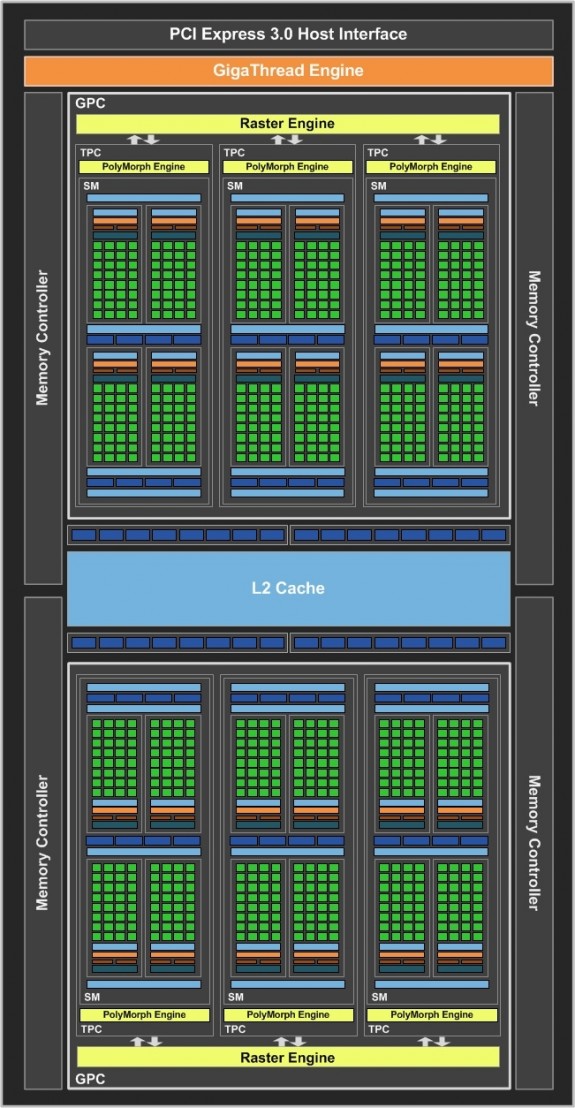GeForce GTX 1050 Ti

The basis of the GeForce GTX 1050 Ti - the GP107 processor - is produced not according to the 16-nanometer process technology, like the same GP106/104/102, but according to 14-nanometer standards. GP107 fully embodies the principles laid down in the Pascal architecture in relation to the gaming-class GPU (unlike the GP100, which has its own characteristics). From older chips - GP106, GP104, GP102 - it differs only in the number of computing units and the volume of caches for various purposes.
The GP107 logic diagram includes two GPCs (Graphics Processing Cluster), each of which consists of a Raster Engine block that performs the initial stages of rendering (definition of polygon faces, projection and clipping of invisible pixels) and three SMs (Stream Multiprocessor). Each of the latter, in turn, contains the PolyMorph Engine, 128 32-bit CUDA cores, 4 64-bit CUDA cores, 8 texture units, and an L1 cache section. Like other gaming GPUs in the Pascal family, GP107 differs from Maxwell in an increased L1 size (from 24 to 48 KB).
Thus, in terms of shader and texture bandwidth per megahertz, the fully functional GP107 has taken a step forward compared to the GM107 and corresponds to the "cut" GM206 in the GeForce GTX 950. In the back-end of the processor, represented by an L2 cache, an ROP array and four 32-bit controllers memory, there are also obvious changes.
Due to the fact that the Pascal architecture has progressive color compression, and the controllers allow you to work with memory at a significantly higher frequency than in GM107 (7000 instead of 5400 Mbps per pin), developers needed to double the number of ROPs compared to GM107. At the same time, it became possible to save the transistor budget on the second-level cache (1 MB versus 2 MB in GM107).
The GeForce GTX 1050 Ti is based on a full-fledged chip. It got two clusters of CPU graphics, which means that there are six streaming multiprocessors. They are packed with 768 CUDA cores, 48 texture units and 32 ROPs. Again, Polaris has 11 rasterization units totaling 16. The truncated GP107 core, as you might guess, lost one streaming multiprocessor. But the power margin allowed us to slightly raise its frequency.
Specifications GeForce GT 1050 Ti
|
|
||||||
|
Chip
|
||||||
|
Frequencies
|
||||||
|
Memory
|
||||||
|
Interface and TDP
|
Both the GeForce GTX 1050 and the GeForce GTX 1050 Ti do not require additional power. Another important difference between the accelerators lies in the amount of video memory. GeForce GTX 1050 is content with only 2 GB, GeForce GTX 1050 Ti - 4 GB.




